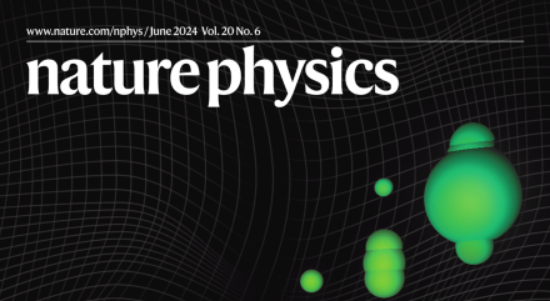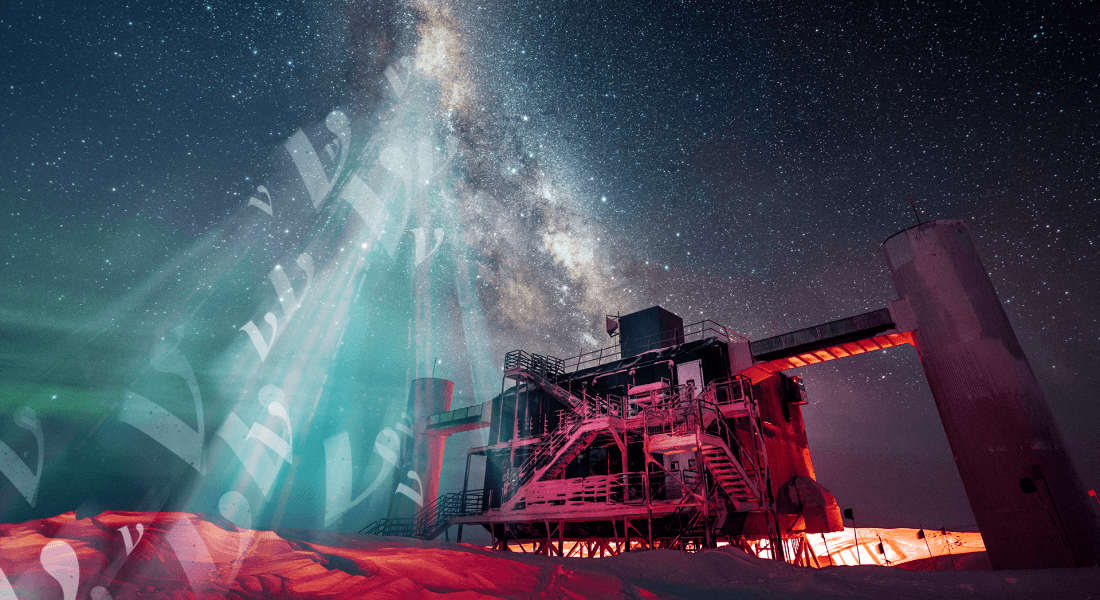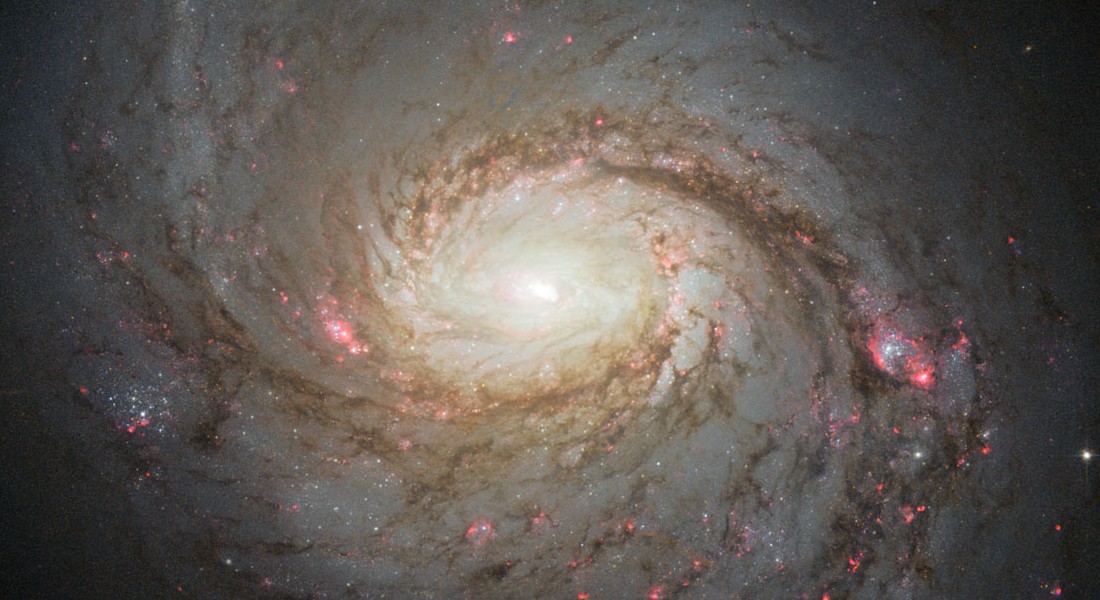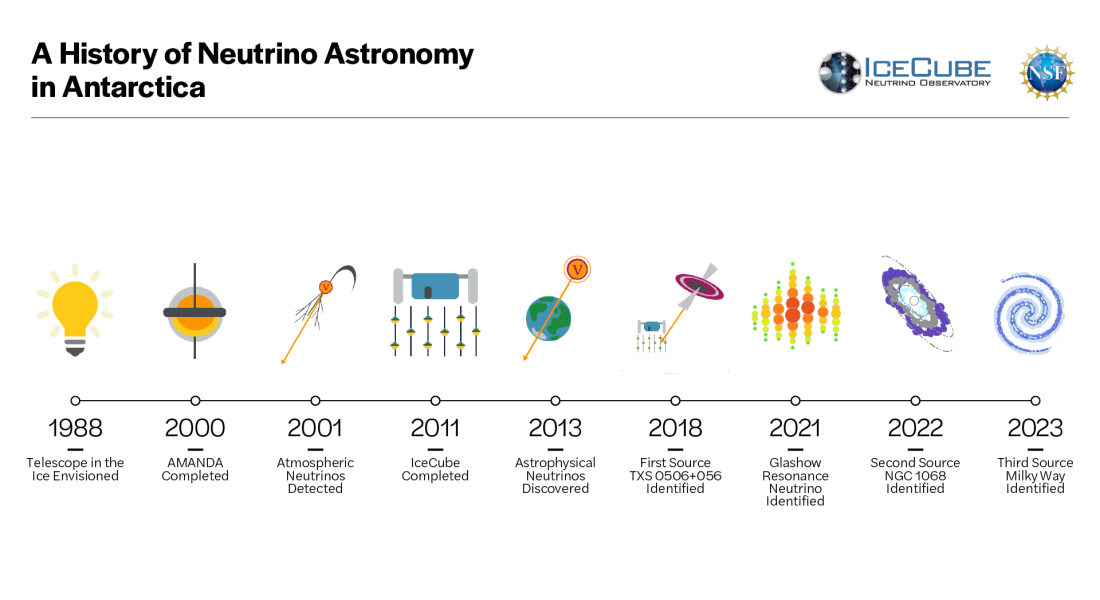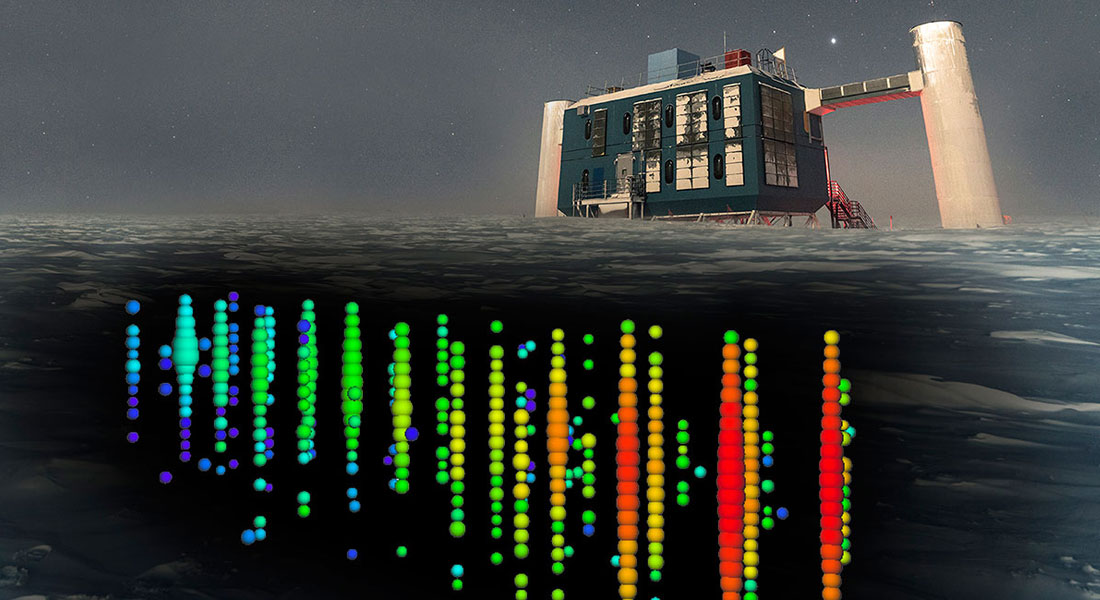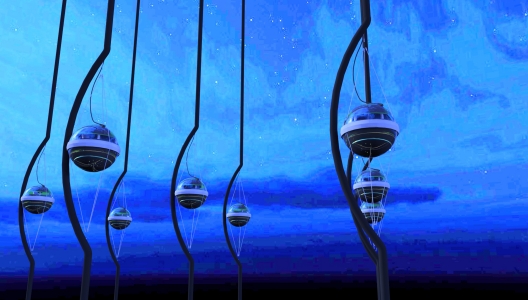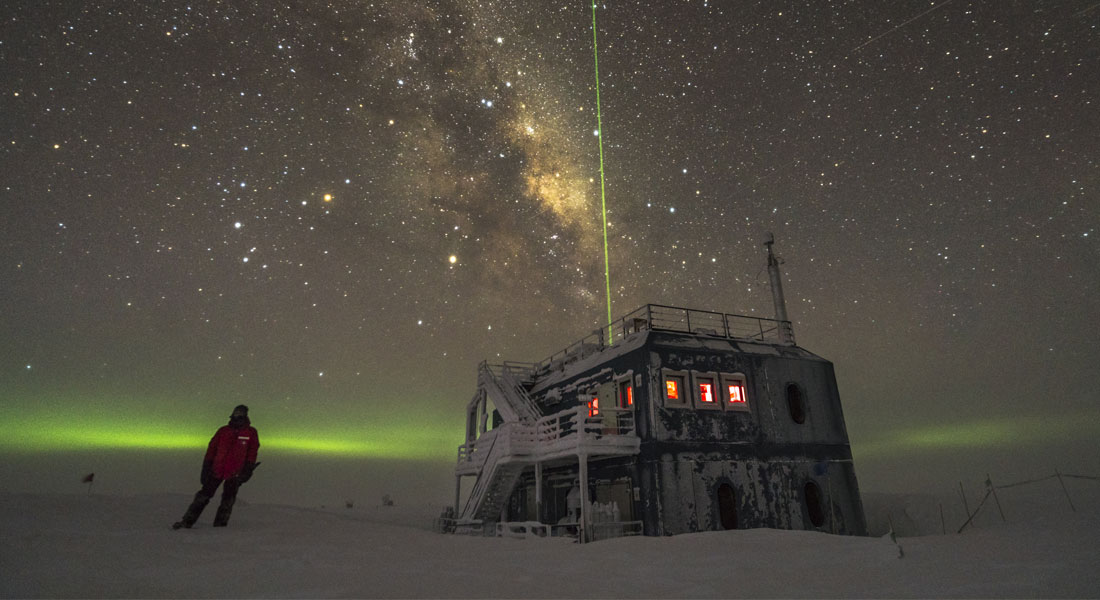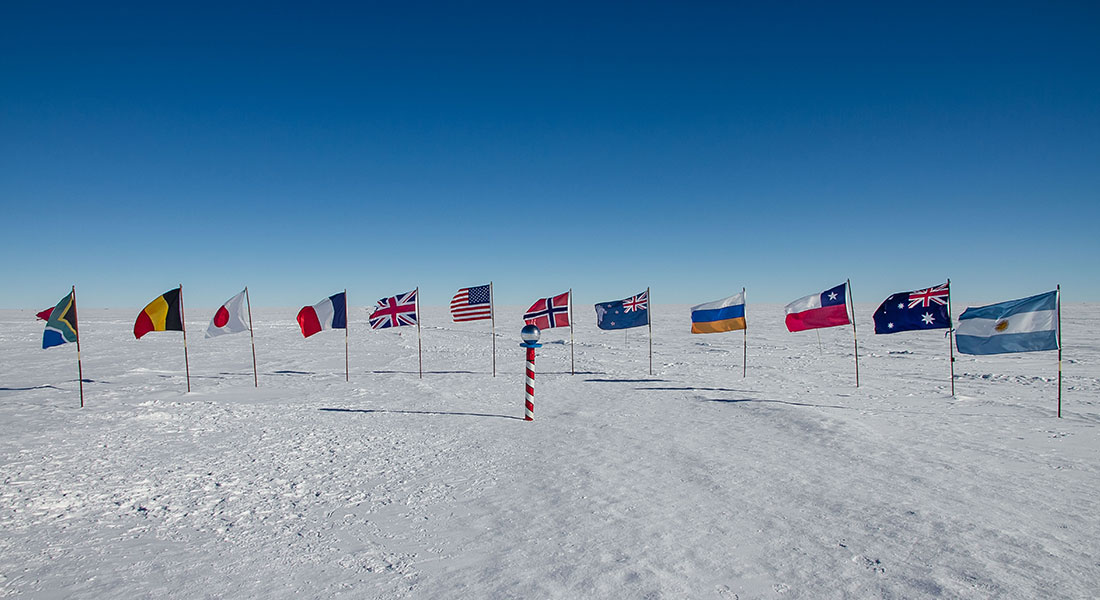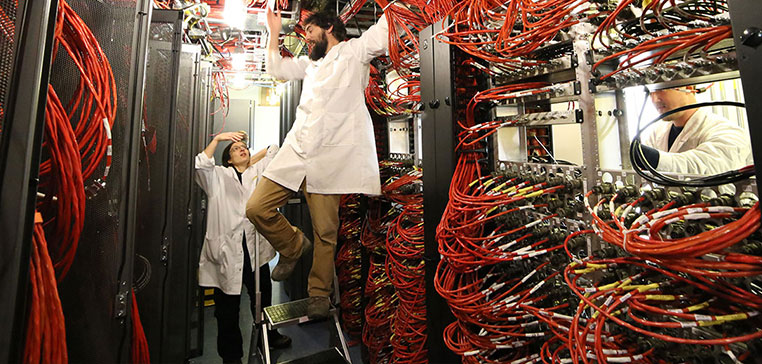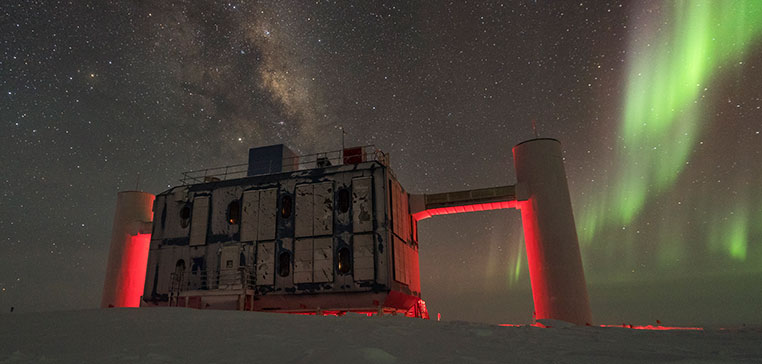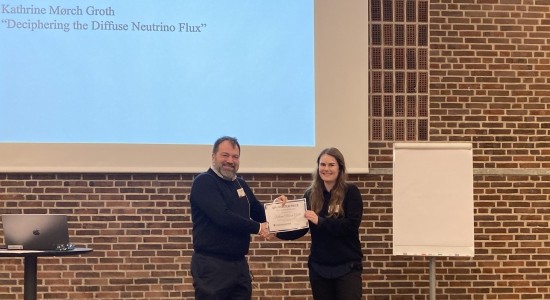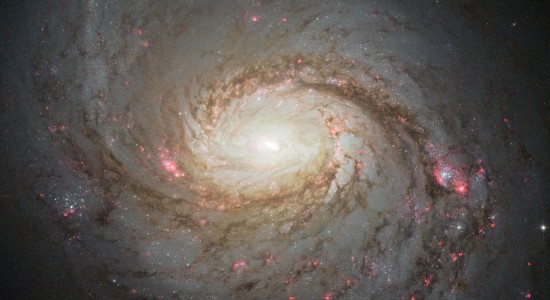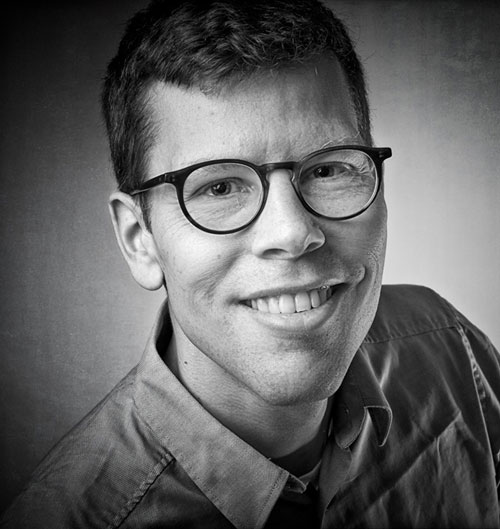IceCube Experiment
IceCube is a part of the subatomic group at the Niels Bohr Institute. The group includes both experimentalists and theorists (from the Niels Bohr International Academy). Indicated are selected topics of responsibility or research interests within neutrino physics and IceCube.
The IceCube group at the Niels Bohr Institute is engaged with both the experimental and theoretical side of neutrino physics and astrophysics, being embedded within the Discovery Center and involving theorists from the Niels Bohr International Academy.
IceCube members at NBI have a broad science portfolio: from searches for high-energy neutrinos from the most violent astrophysical phenomena in the universe such as gamma-ray bursts, supernovae, active galactic nuclei, etc, to fundamental physics probes of quantum mechanical neutrino oscillations and searches for dark matter.
NBI's participation in IceCube was made possible through the support of the Danish National Research Foundation and members of the IceCube groups are also supported by the Villum Foundation, and the Carlsberg Foundation.
Our Collaboration
Since 2013 NBI has been a full member of the IceCube Collaboration, which includes over 450 people from 58 institutions in 14 countries.

The full list of collaborating institutions is available on the collaboration website
Funding
The research activities of the IceCube group are supported by the Carlsberg Foundation, Independent Research Fund Denmark and the European Union.
![]()

IceCube is a polyvalent detector that is well suited for many different areas of research. Our local group at NBI is focusing its efforts in two main areas: low-energy neutrino oscillations, and high-energy astroparticle physics.
 |
Neutrino oscillations The DeepCore array inside IceCube has a low-energy threshold that allows us to study neutrino oscillation properties. |
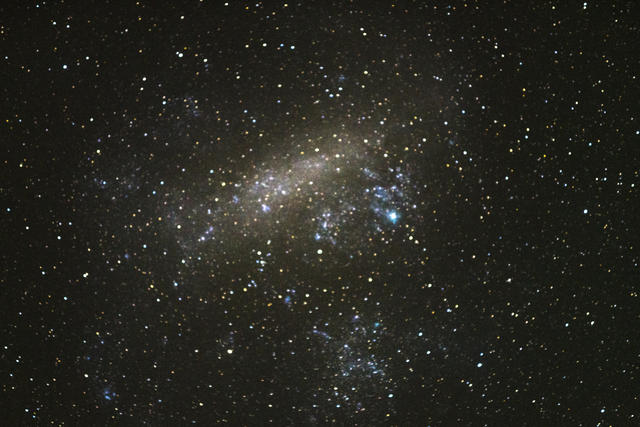 |
Neutrino Astronomy This area of research includes searches for neutrino sources, and progenitors of ultra-high-energy cosmic rays (UHECR). |
 |
Dark Matter (DM) Searches Many theories describing DM candidates predict that they can annihilate into detectable neutrinos. |
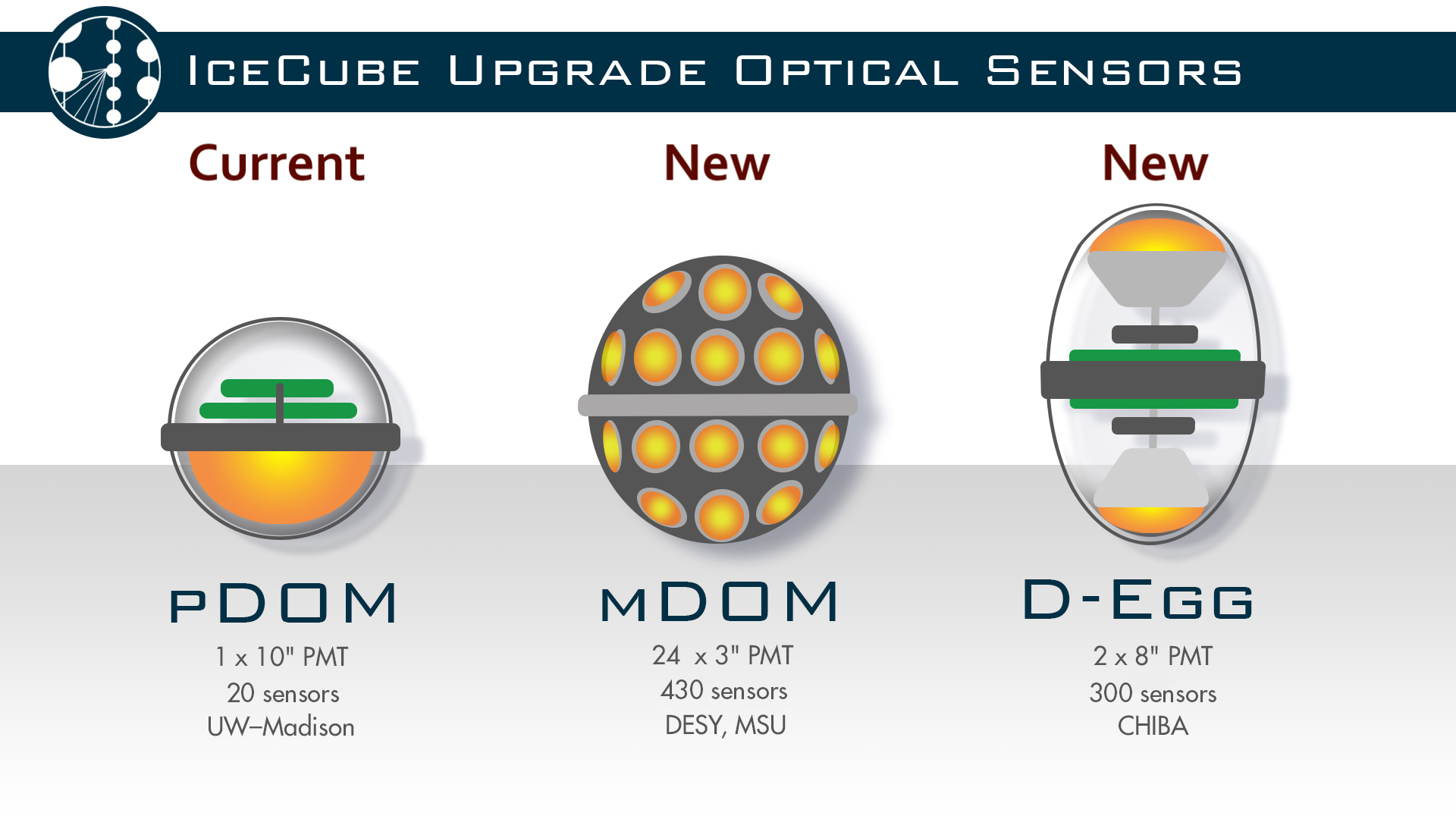 |
The IceCube Upgrade Work is underway to develop the software and analysis tools needed for a new extension of IceCube, to be deployed in 2022/2023. |
 |
GraphNeT |
 |
Discover The Detector Learn more about how neutrinos are detected in IceCube. |
Prospective B.Sc. and M.Sc. students are encouraged to contact Jason Koskinen, koskinen@nbi.ku.dk, regarding working with the NBI IceCube group and possible Projects.
The IceCube group is engaged in mulitiple outreach projects, and we always welcome groups of interested people to learn more about this fascinating experiment.
Interact with IceCube
Any interested groups are encouraged to contact us regarding activities/events related to IceCube and neutrinos. We can come to you, or you can come to us!
High school classes are always welcome to apply for lectures/activities.
High school students are invited to individually to join the international IceCube MasterClass every year in March or April: Spend a full day at the Niels Bohr Institute, analyse real data from IceCube to discover astrophysical neutrinos, and discussing physics with researchers from IceCube.
IceCube has exhibits at the reoccuring event of Kulturnatten (Copenhagen Cultural Night) at NBI.
We are happy to tell more, so please contact us.
IceCube in the Media
Below you will find a list of articles, interviews, and other media regarding the IceCube group at NBI.
- Agurketid i fysikken (Weekendavisen, August 2016)
- Iskolde neutrinoer holder på hemmelighederne (videnskab.dk, August 2016)
- Search for 'ghost particle' that could hold secret to dark matter draws a blank (independent.co.uk, August 2016)
- El neutrino que podría explicar por qué existimos... no existe (elmundo.es, August 2016)
- Flotte billeder fra Sydpolen: Ph.d.-studerende på sit livs eventyr (videnskab.dk, March 2016)
- Gennembrud på Sydpolen: Nu kan neutrinoer bruges til astronomi (videnskab.dk, August 2015)
- Neutrinoer forvandler sig på rejse gennem Jorden (videnskab.dk, April 2015)
- "Neutrinoer på Sydpolen", 10 min. præsentation til gymnasieelever (Faculty of Science, University of Copenhagen, November 2014)
Press Releases
- The long hunted sterile neutrino cannot be traced (NBI Press Release, August 2016)
- Detector at the South Pole explores the mysterious neutrinos (NBI Press Release, April 2015)
- IceCube sees first signs of high-energy extraterrestrial neutrinos (NBI Press Release, November 2013)
- Niels Bohr Institute part of the reseach project IceCube at the South Pole (NBI Press Release, October 2013)
Want to try your first day as a real researcher? See more information about our IceCube MasterClass here.
Below is a list of publications that have directly involved work from members of the IceCube group at the Niels Bohr Institute.
| Publications 2015 | Publications 2016 | Publications 2017 |
| Publications 2018 | Publications 2019 | Publications 2020 |
| Publications 2021 | Publications 2022 | Publications 2023 |
| Publications 2024 | Publications 2025 |
Work involving our group:
Tom Stuttard and Mikkel Jensen. Neutrino decoherence from quantum gravitational stochastic perturbations. https://arxiv.org/abs/2007.00068
IceCube Collaboration. Constraints on Neutrino Emission from Nearby Galaxies Using the 2MASS Redshift Survey and IceCube. https://arxiv.org/pdf/1911.11809.pdf
IceCube Collaboration. Measurement of Atmospheric Tau Neutrino appearance with IceCube DeepCore. https://arxiv.org/pdf/1901.05366.pdf
IceCube Collaboration. Combined Analysis of Cosmic-Ray Anisotropy with Icecube and HAWC. https://arxiv.org/abs/1708.03005
IceCube Collaboration. Search for Neutrinos from Dark Matter Annihilations in the center of the Milky Way with 3 years of IceCube/DeepCore. https://arxiv.org/abs/1705.08103
Theoretical papers from our NBIA colleagues:
Mertsch, Philipp, Rameez, Mohamed and Tamborra, Irene. Detection Prospects for high-energy neutrino sources from the anisotropic matter distribution in the local Universe. https://arxiv.org/abs/1612.07311
Ahlers, Markus and Mertsch, Philipp. Origin of Small-Scale Anisotropies in Galactic Cosmic Rays. https://arxiv.org/abs/1612.01873
Bechtol, Keith, Ahlers, Markus, Di Mauro, Mattia, Ajello, Marco and Vandenbroucke, Justin. Evidence against star-forming galaxies as the dominant source of IceCube neutrinos. https://arxiv.org/abs/1511.00688
PhD and Masters theses:
Étienne Bourbeau. Measurement of Tau Neutrino Appearance in 8 Years of IceCube Data (and A Search for astrophysical neutrinos from the Local Universe).
PhD thesis, 2021
Ida Storehaug. Improving the Atmospheric Neutrino Flux Estimation in IceCube
Master's thesis, 2019
Thomas Halberg. Low Energy Neutrino Reconstruction in IceCube and the IceCube Upgrade
Master's thesis, 2019
Mia-Louise Nielsen. Transient Neutrino astrophysics with IceCube-DeepCore.
Master's thesis. 2019
Lea Halser. Neutrino Fluence of Gamma-Ray Bursts for Arbitrary Viewing Angles.
Master's thesis, 2019
Taus Munck Hansen. Multi-Messenger Probes of the Sources of Ultra-High Energy Cosmic Rays.
Master's thesis, 2019
Michael Larson. A Search for Tau Neutrino Appearance with IceCube-DeepCore.
PhD thesis, 2018.
Mikkel Jensen. Environmentally induced neutrino decoherence in IceCube
Master's thesis, 2018.
Morten Medici. Search for Dark Matter Annihilation in the Galactic Halo using IceCube.
PhD thesis, 2017.
Eva Brottmann Hansen. Early Atmospheric Muon Rejection with IceCube-PINGU.
Master's thesis, 2016
Rasmus Westphal Rasmussen. Determination of the neutrino mixing angle theta_23 octantand differentiation amoung flavour symmetries.
Master's thesis, 2014.
IceCube is a part of the subatomic group at the Niels Bohr Institute and includes both experimentalists and theorists (from the Niels Bohr International Academy). Indicated are selected topics of responsibility or research interests within neutrino physics and IceCube.
 |
David Jason Koskinen Neutrino oscillations, IceCube Upgrade |
|
|
Markus Ahlers, Associate Professor Cosmic neutrino sources, Probing BSM physics with IceCube |
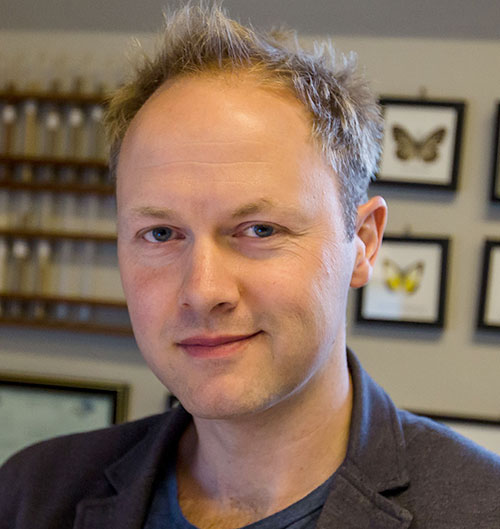 |
Troels Christian Petersen, Associate Professor |
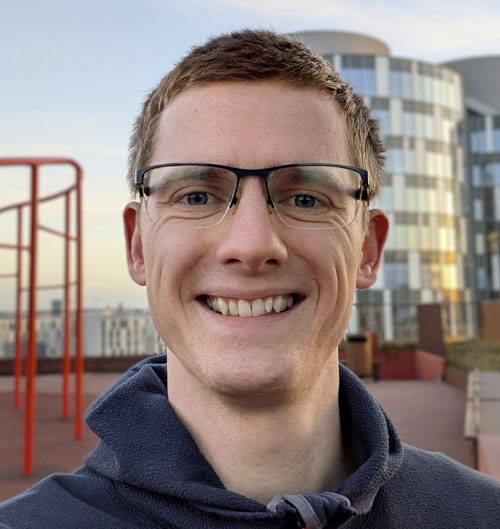 |
Marc Franck Emile Jacquart, PhD Student Neutrino Mass Ordering sensitivity for the IceCube Upgrade |
|
Johann Michael Ioannou-Nikolaides, PhD Fellow High-energy IceCube neutrino reconstruction and classification. |
|
|
Niels den Besten, Master Student PID classification in IceCube using machine learning |
Previous members
|
Subir Sarkar, Niels Bohr Professor Returned to Oxford as Professor at the Rudolf Peierls Centre for Theoretical Physics |
|
Tom Stuttard Neutrino oscillations |
|
Andreas Søgaard, MCRA Research Fellow E-mail: andreas.sogaard@nbi.ku.dk
|
|
James Vincent Mead, Postdoctoral researcher |
|
Mohamed Rameez, Postdoctoral fellow Dark Matter, Point source searches Now researcher at Tata Institute |
|
Linea Hedemark, Master Student Low-energy neutrino cross-sections with GENIE |
|
Moust Holmes, Master Student Thesis - "Inelasticity Reconstruction for IceCube Neutrino Observatory Upgrade" |
|
Kathrine Mørch Groth, PhD Student Thesis - “Neutrinos as unique probes of physics on cosmic to quantum scales”. Neutrino point sources and multi-messenger astronomy |
|
Tetiana Kozynets, PhD Student Thesis - “Atmospheric neutrino oscillations in IceCube-DeepCore within and beyond the unitary framework”. Low-Energy Event Reconstruction |
|
Etienne Bourbeau, PhD student Now AI specialist for the Alexandra Institute |
|
Morten Medici, PhD Student Now a Data Scientist at Novo Nordisk |
|
Simon Ørgaard, Master Student IceCube calibration using stopping muons |
|
Frederikke Rasmussen, Master Student Neutrino Mass Ordering and inelasticity |
|
Clotilde Armand Prætorius, Master Student Searching for Galactic Neutrino Sources with IceCube-Gen2 |
|
Cyan Yong Ho Jo, Master Student Identification of PeV+ Tau Neutrinos using Transformers |
|
Luc Voorand, Master Student Neutrino direction reconstruction in IceCube using Transformers |
|
Jack Parkinson, Master Student Improving prometheus simulations of the IceCube detector |
|
Jorge Prado Gonzalez, Master Student |
|
Kaare Endrup Iversen, Master Student |
|
Leon Bozianu, Master Student |
|
Martin Langgård Ravn, Master Student Now a PhD student at Uppsala University |
|
Kathrine Mørch Groth, Master Student Now a PhD student at the Niels Bohr Institute |
|
Rasmus Faldt Ørsøe, Master Student Now a PhD student with the IceCube group at Technical University of Munich |
|
Kasper Pedersen, Master Student |
|
Sofus Stray, Master Student |
|
Jonathan Jegstrup, Master Student |
|
Tetiana Kozynets, Master Student Thesis - "Angular distributions of atmospheric leptons via two-dimensional matrix cascade equations" Now PhD Student at the Niels Bohr Institute |
|
Taus Munk, Master Student Now creating quantitative solutions at EY |
|
Lea Halser, Master Student |
|
Ida Storehaug, Master Student Now PhD Student at the ALICE Experiment at the University of Oslo |
|
Mia-Louise Nielsen, Master Student Now PhD student at Bispebjerg Hospital |
|
Thomas Schandorf Halberg Now Data Engineer at Novo Nordisk |
|
Mikkel Jensen, Master Student Now Data Scientist at Risika |
|
Eva Brottman Hansen, Master Student Went on to become PhD Student at Lund University |
|
Rasmus Rasmussen, Master Student Now Assistant to the Danish Finance Agency |
|
Joakim Sandroos, Researcher Went on to become PhD Student at JGU-Mainz, Germany |
The IceCube group in the section of Experimental Particle Physics is based in the Niels Bohr Building at the University of Copenhagen.
D. Jason Koskinen, Associate Professor
The Niels Bohr Building
Jagtvej155A, 2200 København N.
Phone: +45 21 28 90 61
E-mail: koskinen@nbi.ku.dk
Staff
| Name | Title | Phone | |
|---|---|---|---|
| Search in Name | Search in Title | Search in Phone | |
| Ahlers, Markus Tobias | Associate Professor | +4535328089 | |
| Koskinen, D. Jason | Associate Professor | +4535326205 | |
| Petersen, Troels Christian | Associate Professor | +4526283739 | |
| Stuttard, Thomas Simon | Guest Researcher |
The IceCube Collaboration
The IceCube Neutrino Observatory is funded and operated primarily through an award from the National Science Foundation as well as many other international foundations including Villum Fonden and The Carlsberg Foundation.
The IceCube Collaboration, with over 350 scientists in 58 institutions from around the world, runs an extensive scientific program that has established the foundations of neutrino astronomy.
Learn more about IceCube’s collaborating institutions on the official IceCube website.

